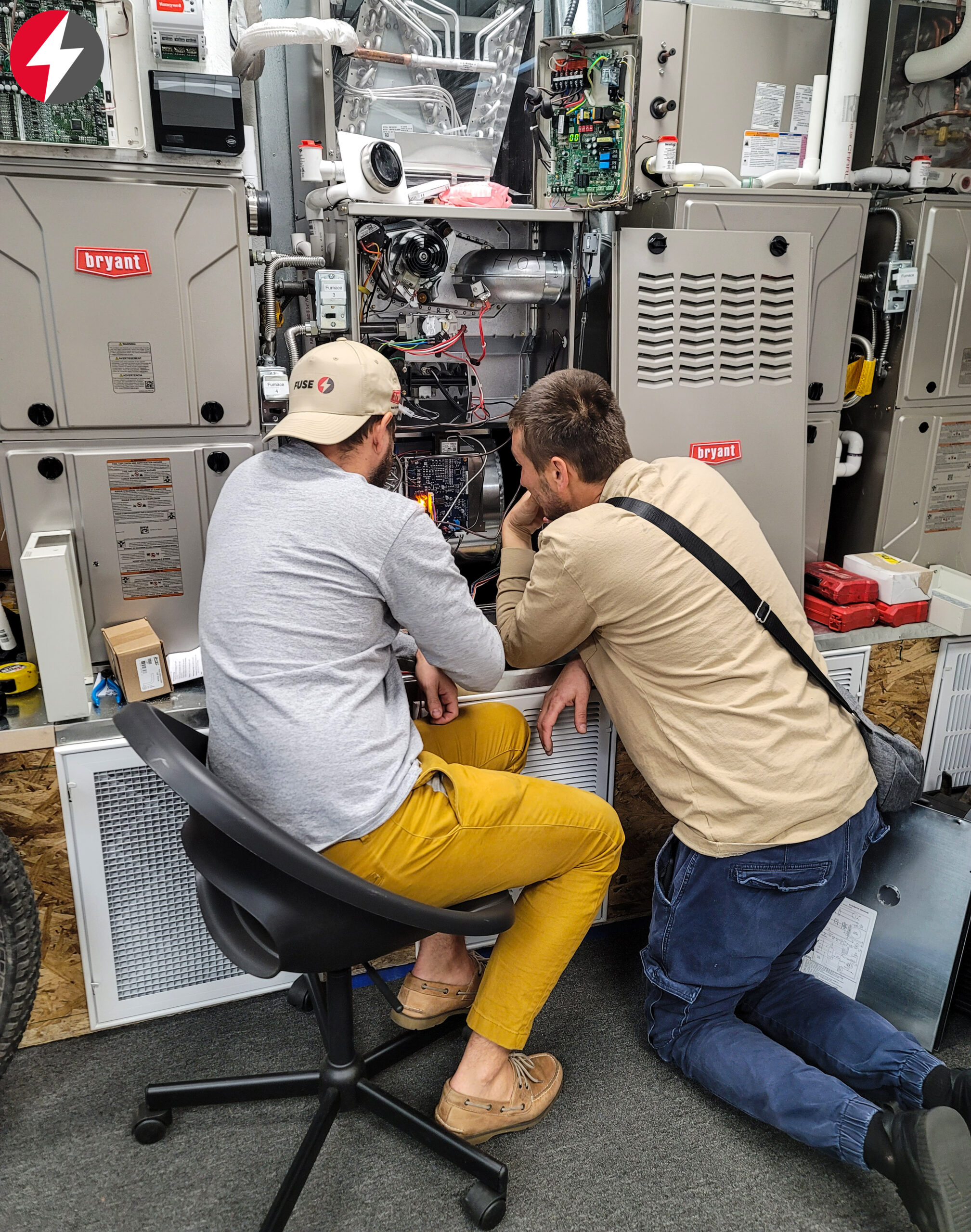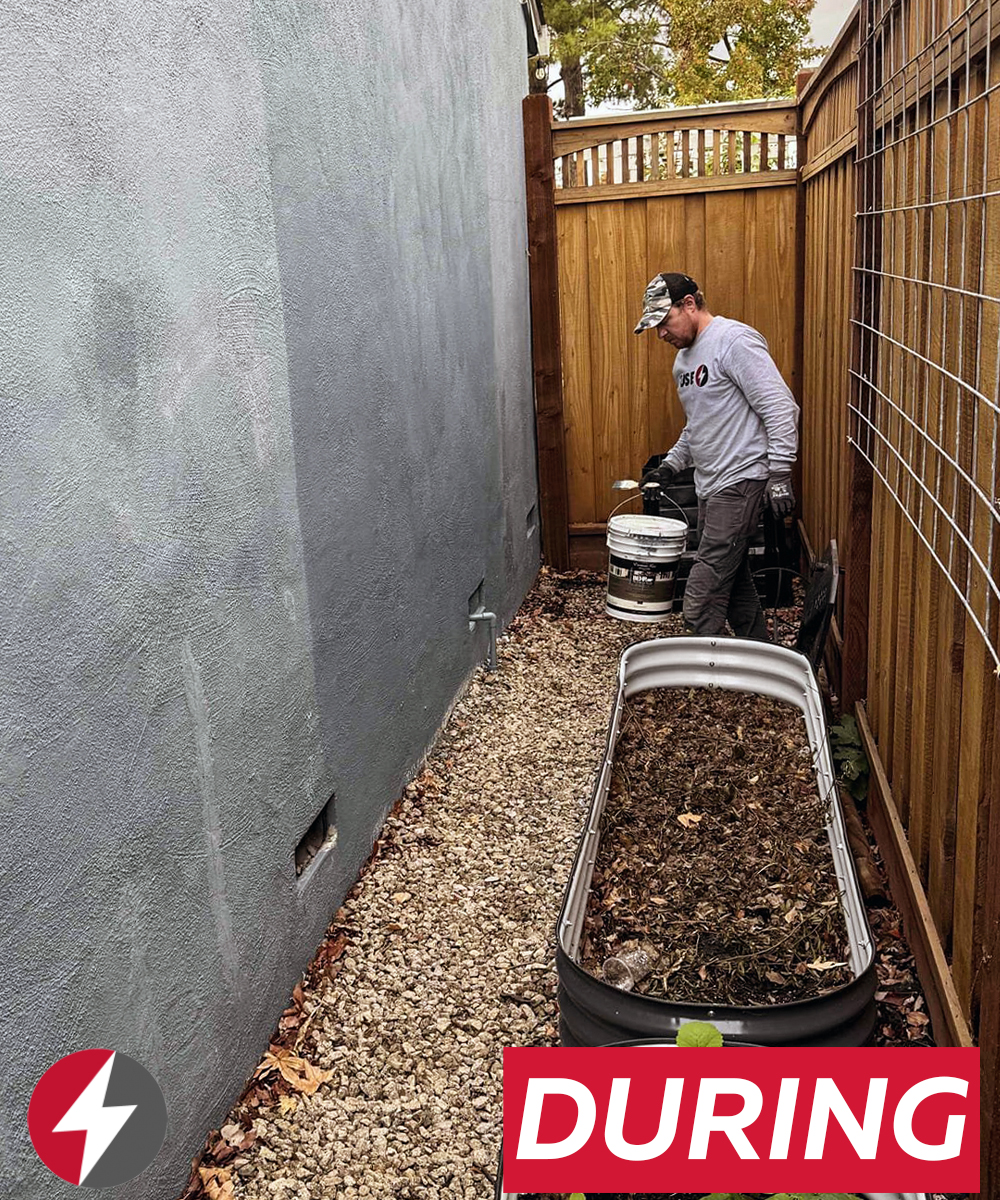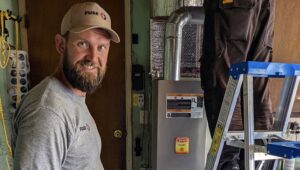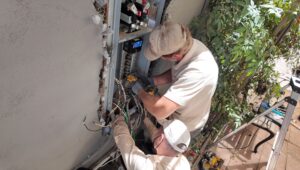Winter is not coming anymore; it is fully here, and we have to survive it. And we all can agree that a fully functional furnace becomes a critical component of home comfort during the winter months. Your furnace consists of multiple crucial components, and one of the most important ones of them is the blower motor. It’s responsible for circulating warm air throughout your home. But what happens when this component malfunctions? This comprehensive guide will walk you through the signs, diagnosis, and solutions for a bad furnace blower motor.
How to Tell if a Furnace Blower Motor is Bad
Identifying a malfunctioning furnace blower motor is the first step towards a solution. Here’s How to tell if a furnace blower motor is bad:
- Unusual Noises: A properly functioning blower motor is quiet. If you notice screeching, rattling, or banging sounds, it’s a red flag.
- Weak Airflow: If your vents are delivering little to no air, the blower motor might be struggling.
- Overheating: A motor that frequently overheats and triggers the safety switch is cause for concern.
- Inconsistent Performance: Fluctuating airflow or intermittent operation can indicate a faulty blower motor.
Signs That Furnace Blower Motor is Bad
There are several signs that will help you know if furnace blower motor is bad. Specifically you can pay attention to these symptoms:
- Increasing energy bills: An inefficient motor struggles to operate, so that may lead to higher power consumption.
- Age and wear: Like all mechanical components, blower motors are not immortal. Aging motors are more prone to failure.
- Circuit breaker tripping: A motor drawing excessive power can easily trip your home’s circuit breaker more that usual.

How to Check if Furnace Blower Motor is Bad
After you learn how to tell if a furnace blower motor is bad, it is important to run some checks. Here is what you should do:
Visual Inspection
Begin with a thorough visual examination of the blower motor. Look for these signs of bad blower motor in furnace:
- Wear and tear: Check for any visible damage on the motor. This can include cracks, rust, or any physical deformities.
- Dust accumulation: Excessive dust can lower motor performance. Look for dust build-up, especially around vents and moving parts.
- Belt condition: If your furnace uses a belt-driven blower motor, inspect the belt for fraying, cracks, or slackness.
Capacitor Test
The capacitor is crucial for starting the blower motor. To test it:
- Turn off the power to your furnace to avoid electrical hazards.
- Locate the capacitor: it’s usually a small, cylindrical or oval component attached to the motor.
- Look for signs of swelling, rust, or leakage on the capacitor.
- Use a multimeter to the capacitance setting. A reading significantly outside the capacitor’s rating indicates a problem.
Note: Handling electrical components can be dangerous. If you are not sure you can handle it, it is better to seek professional assistance.
Electrical Check
An electrical check can reveal hidden issues. Brace yourself with a multimeter and do the following steps:
- Ensure the power to the furnace is turned off.
- Locate the motor’s wiring. Consult your furnace’s manual if necessary.
- Set your multimeter to the continuity setting and check each wire. A lack of continuity suggests a break in the circuit.
- Switch the multimeter to the voltage setting. Compare the reading with the motor’s rated voltage (found in the manual or on a label on the motor).
Expert Advice: Unusual readings or the absence of voltage may indicate electrical issues beyond the motor. It’s best to consult a professional in such cases.
Remember: While these steps can guide you in diagnosing a faulty blower motor, always prioritize safety. If you’re uncomfortable or unfamiliar with handling electrical components, it’s wise to seek professional help. Regular maintenance and timely intervention can save your furnace from larger, more expensive repairs down the line.
Importance of Timely Repairs or Replacements
Understanding the significance of your furnace blower motor is akin to appreciating the heart in the human body. Just as the heart pumps blood to keep us alive, the blower motor plays a pivotal role in circulating air throughout your heating system. Recognizing bad furnace blower motor symptoms early can be the difference between a simple repair and a costly replacement.
Signs of a failing blower motor include unusual noises, like screeching or banging, indicating wear and tear. If your furnace struggles to start or fails to blow air consistently, it’s waving a red flag. Increased energy bills can also be a subtle hint, as a struggling motor works harder, consuming more electricity.
Why act swiftly? Delaying repairs can lead to complete system failure. Imagine a chilly winter night without heat – not only uncomfortable but potentially hazardous.
Extending the Life of Your Furnace Blower Motor

A stitch in time saves nine, and this adage holds true for your furnace blower motor. Regular maintenance is the linchpin in extending its lifespan. Consider these steps before you notice any signs of bad blower motor in furnace:
- Routine Cleaning: Dust and debris are the nemeses of blower motors. Regular cleaning ensures smooth operation.
- Lubrication: A well-oiled motor reduces friction, akin to how we need water to keep our joints moving smoothly.
- Regular Inspections: Having a professional inspect your furnace annually can catch issues before they escalate.
Conclusion & Seeking Expert Assistance
A functioning furnace blower motor is vital for a comfortable and warm home during the colder months. Being aware of the signs of a failing motor, conducting regular checks, and turning to professionals when necessary can save you from the horror of a chilly night out of nowhere and the expense of major repairs. Remember, learning how to know if furnace blow motor is bad and addressing issues early can prolong the life of your furnace and ensure its efficient operation. And if your furnace is ready to give up, we are here to help you choose a new one — just call us at (669) 242-5354 or email to support@fuseservice.com.






